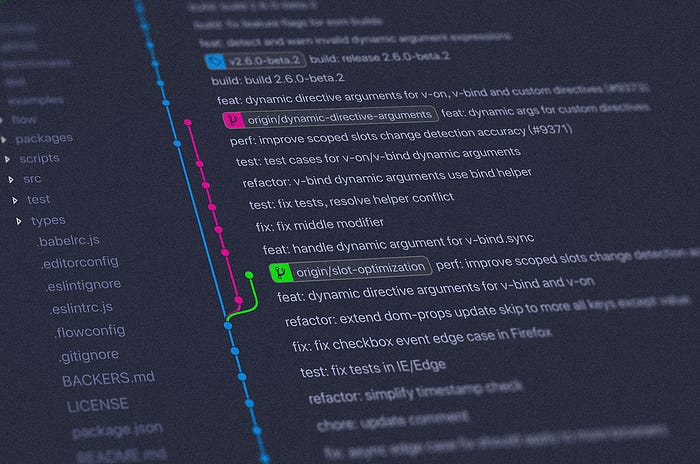Could Microsoft be en route to dumping Windows in favor of Linux?

Microsoft has been doing everything in its power to migrate users from the
standard client-based software to cloud and other hosted solutions, and its
software cash cow has become web-centric and subscription-based. All of those
Linux users could still work with Microsoft 365 and any other Software as a
Service (SaaS) solution it has to offer--all from the comfort and security of
the Linux operating system. That's a win-win for Microsoft and consumers
because Windows isn't as much of a headache to deal with (by way of bug
hunting and security patching its proprietary solutions), and consumers get a
more reliable solution without missing out on anything. If Microsoft plays its
cards right, the company could re-theme KDE or just about any Linux desktop in
such a way that it's not all that different from the Windows 10
interface. Lay this out right, and consumers might not even know the
difference--a "Windows 11" would simply be the next evolution of the Microsoft
desktop operating system. Speaking of winning, IT pros would spend less time
dealing with viruses, malware, and operating system issues and more time on
keeping the network running and secure.
Open sourcer Camunda buffs up RPA platform in an overcrowded market
Speaking to The Register, Camunda CEO and co-founder Jakob Freund said: “We
have seen from Camunda customers such as Deutsche Telekom and National
Westminster Bank that RPA is a great short-term solution, however it's a
highly maintenance-intensive technology. RPA is essentially reading and
automating the same user interface that a user would use.” A front-end UI
might be in a spreadsheet, a scanned document or even a CRM or ERP system and
any changes to it could break bots. “This makes RPA labour intensive,” he
said. While Camunda solution may be a step in the right direction, the journey
to bot nirvana is a long one. Craig Le Clair, Forrester Research veep, said:
“There are many BPM vendors like Camunda that are acquiring or positioning in
some way for the RPA or for what we call now Intelligent Automation market."
He said Camunda approach was to see RPA thus far as a simple task automation
without stronger rules management. It also usually failed to take account of a
broader API and UI integration approach.
Google Search As a Vishing Tool: Big Cyber Security Challenge For Bank Customers

The article is based on the analysis of Google search and various cyber crimes
cases registered in the cyber crime cells across Indian Territory and cases
reported in various banks across India. Google search is the key focus area in
this article. Cyber criminals update the name and mobile number in Google
search by logging their Gmail account. When bank customer searches contact
number of the concerned bank branches/merchants/payment intermediaries for
enquiring or resolving the problem, he calls on the mentioned fake mobile
number which has been updated by the fraudsters. Consequently, Cyber criminal
gets the sensitive financial and secret information from the bank customers in
fraudulent manner over phone line for resolving their problem and dupe the
bank customers by debiting their bank account. Banks/merchants/payment
intermediaries always provide genuine contact numbers at their respective
website so that customers can easily access that numbers for establishing
communication with banks /merchants/payment intermediaries in case of any
related issue. But due to unawareness of phishing and vishing like scam, bank
customers are easily duped by the cyber criminals.
How visualizing my Agile backlog improved productivity

One of the key lessons that I’ve had to learn as a UX Designer is how to work
with the Agile backlog. Part of that is to understand how User Research and
Business requirements can fit together. What I mean by that is that during the
discovery phases of projects, you’re likely to also do User Interviews or
other research while the Business is forming their backlog. You may have a lot
of insights that help inform different backlog items, but these may be things
that you find out on your research that no one else on the product team may
have encountered. For example, there may be user workarounds to the official
process that people don’t necessarily want to advertise, but it’s still useful
user insight. So how do you combine these two groups? I initially tried to
argue from the backlog standpoint, creating specific backlog items, but it was
hard for members of the team to get on board with these things. Because even
if they trust you that you did good research, it’s something that they’re not
familiar with. And that’s exactly what was happening. People would view an
isolated business requirement and change the wording or not realize what we
were trying to say, without realizing how it might impact other items or the
big picture.
Curiosity Artificial Intelligence: A Know-All Guide

If we take humans as an example, curiosity is what makes us learn things.
Starting from a stage when humans get maturity, he/she becomes curious about
the movements around them and learns from it. Then think about AI getting
curious. AI is already known for its features that have reached the cliff by
its technological improvements. AI has surpassed human abilities by making
predictions and decisions in a split second by going through all the data.
When we compare human curiosity with AI curiosity, AI emulates the behaviour
in an algorithm that could enhance the potential for self-directed machine
learning so that AI system would be driven to seek out or develop solutions to
unfamiliar problems. In artificial intelligence, reinforcement learning (RL)
is the process of motivating AI to perform desired behaviour and punishing it
for undesired ones. RL seeks a feedback signal that assures that AI is making
a step closer towards its goal. It learns observation and experience through
the process. Training the AI in positive or negative feedback is up to the
person who approaches.
TypeScript creator: How the programming language beat Microsoft's open-source fears
But as TypeScript matured and open source gained acceptance at Microsoft in
its pivot from Windows to the cloud, the company would in 2014 shift
TypeScript to a model of "open development" via a public repository on GitHub.
Using GitHub allowed the community of TypeScript and JavaScript developers to
influence its future. Because of that different approach, his team now has
"zero distance" to its customers – the developers who use either JavaScript or
TypeScript. "There's open source in the technical sense in that you give
people your source code and give away your intellectual property rights, and
technically that's open source," explains Hejlsberg. "But then there's
open development, where you actually do your entire development process in the
open, which we've been doing now since TypeScript moved to GitHub in
2014." Today, GitHub, which Microsoft acquired in 2018 for $7.5bn, is
where the TypeScript team of about 20 Microsoft engineers do all its daily
work, allowing for a "closeness to our customers like nothing I've seen
before".
The Disruption Era: The Future Of Coworking

Indeed, technology is unquestionably going to be a crucial point. A short
report from CBInsights shows the “office of the future” will probably have
voice tech systems to avoid touching, as well as autonomous cleaning
solutions; air-improving systems to make us more productive; sensors to count
people in rooms, along with a wellness check at the entry. One other important
point is sustainability. Since workers spend most of their time indoors, it’s
crucial to make that environment livable and sustainable. According to
Accenture, just 11% of the employees are completely satisfied with their
workspace. Also, many governmental initiatives plan to cut carbon footprints
down by developing nearly zero-energy consumption buildings. Some companies
also have come up with different solutions to reduce energy usage, such as
solar panels, systems that use rain or water energy as well as some innovative
solutions like converting workers’ footsteps into data and energy. According
to the global coworking community GCUC, while the U.S. and Europe are expected
to grow slowly, China is catching up fast and is expected to step over within
the next few years, as the global number of coworking spaces increases by over
one-third by 2022.
Visa Alert: POS Malware Attacks Persist

The three POS malware variants that targeted one hospitality company in June
were identified as RtPOS, MMon and PwnPOS, according to the Visa report.
"There is evidence to suggest that the actors employed various remote access
tools and credential dumpers to gain initial access, move laterally and deploy
the malware in the POS environment," according to the report. The malware
variants are designed to scrape payment card data from Windows-based POS
devices, but each performs its functions differently, according to the report.
The RtPOS malware uses a specialized algorithm to check for payment card data
before bundling the information into a file that the fraudsters later
exfiltrates through a command-and-control server, the report notes. The MMon
malware, on the other hand, deploys a command-line memory scraping technique
that collected payment card data from a POS device's memory. The Visa report
notes this malicious code, in use since 2010, frequently is customized. The
PwnPOS malware creates persistence within POS devices and attempts to scrape
payment card data from memory.
Quantum is years away, but business case can be made today

Working with D-Wave, Accenture ran a test using quantum annealing to
demonstrate that there are benefits to using quantum techniques over
traditional methods when hundreds of assets and/or factors are involved in the
calculation. According to BBVA, the promising results have convinced the team
to continue its investigation of this case with other technologies. Discussing
the potential impact of quantum computing on financial services, Carlos
Kuchkovky, global head of research and patents at BBVA, said:“Although this
technology is still in an early stage of development, its potential to impact
the sector is already a reality. Our research is helping us identify the areas
where quantum computing could represent a greater competitive advantage, once
the tools have matured sufficiently. We believe this will be, for certain
concrete tasks, in the next two to five years.” Alan Baratz, CEO of
D-Wave, said: “Quantum computing is poised to fundamentally transform the way
businesses – especially large-scale enterprises – solve critical problems. As
enterprise leaders and decision-makers rethink business processes to become
more agile and innovative, they need the tools and support to turn their ideas
into quantum applications that have a real impact on their business.
Dr Lal Pathlabs data leak: Legal opinions on liabilities, punishments ...

The company now claims that the loophole has been patched but there is no
explanation about the magnitude of information leaked online. With sensitive
personal data leak happening every now and then, The420 team spoke to legal
and cyber experts to find out legal liabilities and punishment in such cases.
All the cyber experts unanimously said it is the companies’ responsibility to
ensure the safety of their customers’ data. Patching the loophole is the bare
minimum expected from them. Experts highlighted that private companies are not
serious about data protection which can also be gauged by the amount they
spend on its security. Explaining the legal action in such cases, Delhi based
senior lawyer Karnika Seth said, “Section 43 A of the IT Act, 2000 requires
companies to safeguard personal data and personally sensitive data. Health
records are sensitive data. ISO 27001 certification is one of the standards
required to comply with extant data protection measures.” Explaining other
legal provisions in such cases, Mumbai based Dr Prashant Mali, Cyber &
Privacy Expert Lawyer said, “Section 85 of the IT Act, 2000 deals with the
offence by companies and Section 72A deals with a contractual data breach. The
law is stringent implementation after 19 years of law in force is pathetic and
no awareness.”
Quote for the day:
"Make sure you have finished speaking before your audience has finished listening." -- Dorothy Sarnoff
No comments:
Post a Comment